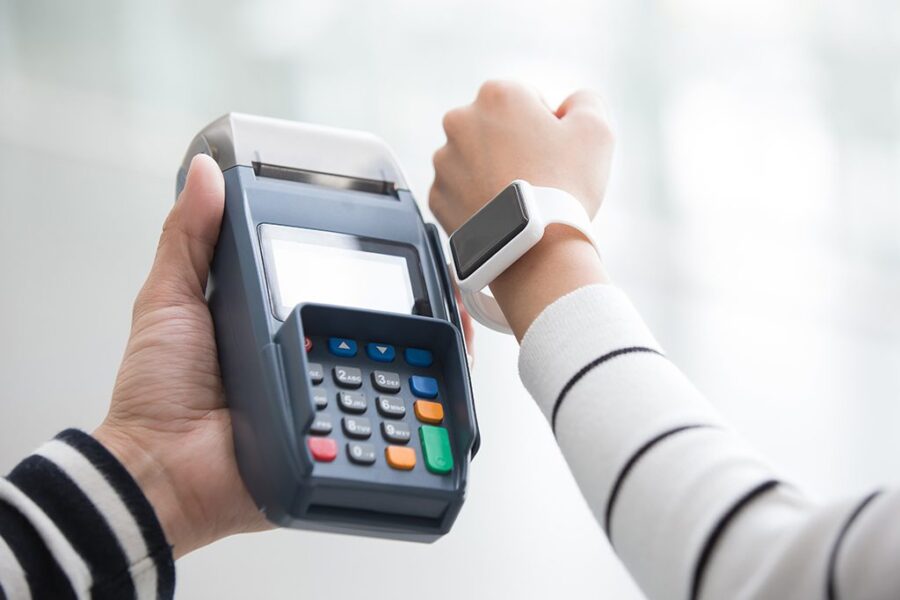
Banks and financial institutions offer great value and convenience to their end users. However, they are notorious for being susceptible to fraudulent attacks such as credit card identity theft. A lot has been done in adding layers of security to an individual’s banking experience. Whether two-factor authentication or OTP-protected transactions, banks and financial institutions have come a long way in securing their customers’ account information and transactions. RFID technology in banks, financial institutions, and fintech enterprises has benefited from open APIs and fintech megatrends and applications while they have been transformed.
RFID, or Radio-frequency Identification, is a security system that allows you to identify and track objects using electromagnetic fields. RFID technology in banks and financial institutions is a prevailing option for identity verification, identity theft protection, biometric authentication, and more. These solutions confirm top-notch security and facilitate customers in protecting their money and investments and allow banks and financial institutions to secure their assets and inventory. Plus, RFID technology is boosting the productivity of banks and financial institutions by automating several processes.
Enhancing customer retail experience
Maintaining online anonymity and thorough identity verification is key to superior banking and customer experience and identity theft protection. RFID technology in banks and financial institutions delivers biometrics identification. It is a revolutionary way of identity verification and prevents credit card identity theft. Moreover, credit and debit cards embedded with RFID chips are hugely useful in speeding up the retail payment experience. One no longer has to wait for the cashier to swipe their cards, enter the PIN, wait for the authentication to initiate, and for the payment to pull through. With cards embedded with RFID chips, end-users can tap their card on the payment machine, and the entire identity verification process takes place in under a second. You can then pick up your items and walk out of the store. These RFID chips maintain the anonymity of your details and prevent credit card identity theft. Thereby enhancing the user’s payment experience.
Multifunctional retail applications
Since RFID technology in banks and financial institutions offers a quick and effective biometrics authentication method, it also smooths out multifunctional applications such as membership and loyalty. Loyalty points received on a specific transaction are effectively sent to the user’s account without any separate process to be followed. Since identity verification has already been done using the RFID technology, we know that the loyalty points are sent to the correct account. This identity verification also helps in membership processes. Any points to be redeemed or membership perks to being enjoyed can be rapidly taken care of using this biometrics authentication process.
RFID technology has also given the path to smart fitting rooms. As soon as the customer tries on a new shirt, the intelligent fitting room can let them know if the same shirt is there in a different color or size. It can also notify the customer if the brand is providing a discount or an offer. Moreover, the customer can also get outfit recommendations as to which pair of jeans would go well with the shirt, which brand offers such a pair of jeans in the store, and if it’s in stock right now or not. Smart fitting rooms also allow the staff to secure their assets well. Furthermore, people taking clothes into the fitting rooms won’t be able to steal them. Therefore, RFID solutions help mitigate the chances of shoplifting.
Asset tracking by using the RFID technology
Management of cash and other assets is important for a bank’s steady functioning and for the bank to deliver a seamless banking experience to its customers. RFID tags on courier bags, cheques, cash, and more are a great way to keep track of them and ensure that the inventory is up-to-date. These RFID tags help monitor the movement and identification of each of these assets and ensure no foul play occurs.
ATMs, vaults, cash sorter machines, and more are important assets of a bank that need systematic protection. The RFID technology in banks and financial institutions can also be utilized here. All these assets’ maintenance and regulatory compliance can be successfully managed with RFID tags. This way, the process doesn’t require to be carried out manually. These RFID tags not only help augment the usage of resources but also provide a boost to productivity. Hence, RFID technology is slowly replacing the previously implemented barcode scanning method of maintaining inventory.
Conclusion
Badges, identity cards, laptops, computers, safety deposit boxes, and digital databases can be secured by implementing RFID chips. Thus, via biometrics authentication, one can ensure that only authorized personnel have access to these assets. Banks and financial institutions can protect their physical and digital assets. Hence, establishing robust access control.

